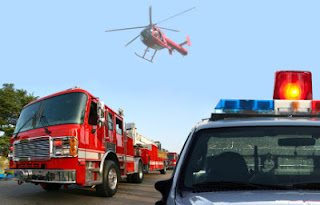Ann asks:
I have a question about treatment of a leg fracture in the late 1860's. My character has broken his tibia (? --the bone at the front of the calf). It's not a compound break. Can you tell me if it would have been splinted or casted at that time, and how long before a determined person with such a break could walk using crutches? How long do such breaks take to heal?
Jordyn says:
Here is a great source that talks about the invention of plaster of paris. It looks like it would have been used for casting during your time frame. http://www.ehow.com/about_5134930_plaster-paris-history.html
This link says specifically:
With a cast in place-- he should be able to walk with crutches but NOT bear weight right away. That would be very painful. People are usually in casts, depending on the break, for four to six weeks. Today, we usually splint people for a week to allow for swelling before the cast is put in place to prevent compression syndrome but I can't say whether or not that would have been common practice at the time. He will have muscle atrophy of the leg during that time from non-use/limited use.
*************************************************************************
 Ann Shorey has
been a full-time writer for over twenty years. Her writing has appeared in Chicken Soup for the Grandma’s Soul, and
in the Adams Media Cup of Comfort
series. She made her fiction debut with The Edge of Light, Book One in the At
Home in Beldon Grove series. She’s tempted to thank Peet’s coffee and Dove
chocolates when she writes the acknowledgments for her books.
Ann Shorey has
been a full-time writer for over twenty years. Her writing has appeared in Chicken Soup for the Grandma’s Soul, and
in the Adams Media Cup of Comfort
series. She made her fiction debut with The Edge of Light, Book One in the At
Home in Beldon Grove series. She’s tempted to thank Peet’s coffee and Dove
chocolates when she writes the acknowledgments for her books.
She may be contacted through her website, www.annshorey.com, which also contains her blog, http://annshorey.blogspot.com/ or find her on Facebook at http://www.facebook.com/AnnShorey.
Plaster Casts
- The invention of the plaster bandage can be attributed to an Arabic doctor and is noted in the Al-Tasrif, an Arabic medical encyclopedia dated from around 1000 C.E. This earlier adaptation of plaster for orthopedic cast making was unknown by European and American doctors. The use of plaster of Paris in the modern medical field began in earnest during the 1800s. By the 1850s bandages were rubbed with a plaster of Paris powder and then dampened and applied around the injury. During the 1970s this type of cast making began to wane. Most of today's orthopedic casts are made of synthetic materials.
With a cast in place-- he should be able to walk with crutches but NOT bear weight right away. That would be very painful. People are usually in casts, depending on the break, for four to six weeks. Today, we usually splint people for a week to allow for swelling before the cast is put in place to prevent compression syndrome but I can't say whether or not that would have been common practice at the time. He will have muscle atrophy of the leg during that time from non-use/limited use.
*************************************************************************
 Ann Shorey has
been a full-time writer for over twenty years. Her writing has appeared in Chicken Soup for the Grandma’s Soul, and
in the Adams Media Cup of Comfort
series. She made her fiction debut with The Edge of Light, Book One in the At
Home in Beldon Grove series. She’s tempted to thank Peet’s coffee and Dove
chocolates when she writes the acknowledgments for her books.
Ann Shorey has
been a full-time writer for over twenty years. Her writing has appeared in Chicken Soup for the Grandma’s Soul, and
in the Adams Media Cup of Comfort
series. She made her fiction debut with The Edge of Light, Book One in the At
Home in Beldon Grove series. She’s tempted to thank Peet’s coffee and Dove
chocolates when she writes the acknowledgments for her books.She may be contacted through her website, www.annshorey.com, which also contains her blog, http://annshorey.blogspot.com/ or find her on Facebook at http://www.facebook.com/AnnShorey.
































